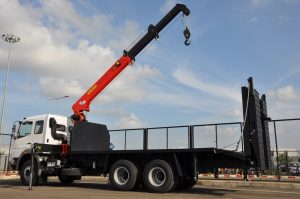Semi trailers are an essential part of the logistics and transportation industry, offering various designs to meet specific cargo hauling needs. Among these, the flat top semi trailer stands out due to its unique design and functionality. This article delves into the specifics of flat top semi trailers, comparing them with other semi trailer types to highlight their distinctive features and advantages.
Design and Structure
Flat Top Semi Trailer: A flat top semi trailer features a flat, open deck with no sides or roof. This design makes it versatile for hauling a wide range of goods, especially oversized loads or machinery that does not fit within the confines of enclosed trailers. Typically, these trailers come in lengths ranging from 40 to 60 feet, with widths around 8.5 feet, conforming to standard legal dimensions. The absence of sides and a roof simplifies the loading and unloading process, especially for cargo that requires cranes or forklifts from the side or above.
Other Semi Trailer Types: In contrast, other semi trailers like dry vans, reefers, and low loaders have specific structures catering to different types of cargo. Dry vans, for example, are enclosed and ideal for dry goods that need protection from the elements. Reefers are refrigerated for temperature-sensitive cargoes, while low loaders have a lowered deck for transporting tall items without exceeding height restrictions.
Load Capacity and Flexibility
Flat Top Semi Trailer: The load capacity of flat top semi trailers can vary significantly based on design and material quality, with typical maximum loads around 48,000 pounds. The open deck design provides the flexibility to transport oversized loads or machinery extending beyond the trailer's sides or height, which would not be possible with enclosed trailers.
Other Semi Trailer Types: Enclosed trailers and specialized trailers like tankers or dump trailers have predetermined dimensions and capacities designed for specific cargo types, limiting their versatility. For instance, dry vans typically support similar maximum weights but cannot accommodate oversized loads due to their enclosed nature.
Advantages and Use Cases
Flat Top Semi Trailer: The main advantage of flat top semi trailers lies in their versatility and ease of loading/unloading. They are ideal for construction materials, heavy machinery, steel coils, lumber, and other oversized items. The simplicity in design also tends to lower the initial purchase cost and maintenance expenses compared to more specialized trailers. For example, the cost of a standard flat top semi trailer can range between $20,000 and $30,000, depending on specifications and materials, with steel being a common choice for durability and strength.
Other Semi Trailer Types: Each semi trailer type has advantages tailored to specific cargo needs. For instance, reefers provide the necessary environment for perishable goods, while dry vans offer protection for general cargo from theft and weather conditions. However, these specialized functions come at a cost, including higher initial investment and operational costs due to the need for refrigeration in reefers or the additional maintenance of enclosed spaces in dry vans.

Conclusion
The flat top semi trailer offers a blend of versatility, ease of use, and cost-effectiveness that is hard to match with other types of semi trailers. While other trailers serve specific purposes and offer advantages for particular types of cargo, the flat top's open design and structural simplicity make it an indispensable tool in the transportation and logistics industry for a wide range of applications. Whether for construction materials, heavy machinery, or other oversized items, flat top semi trailers provide a reliable and efficient transportation solution.
